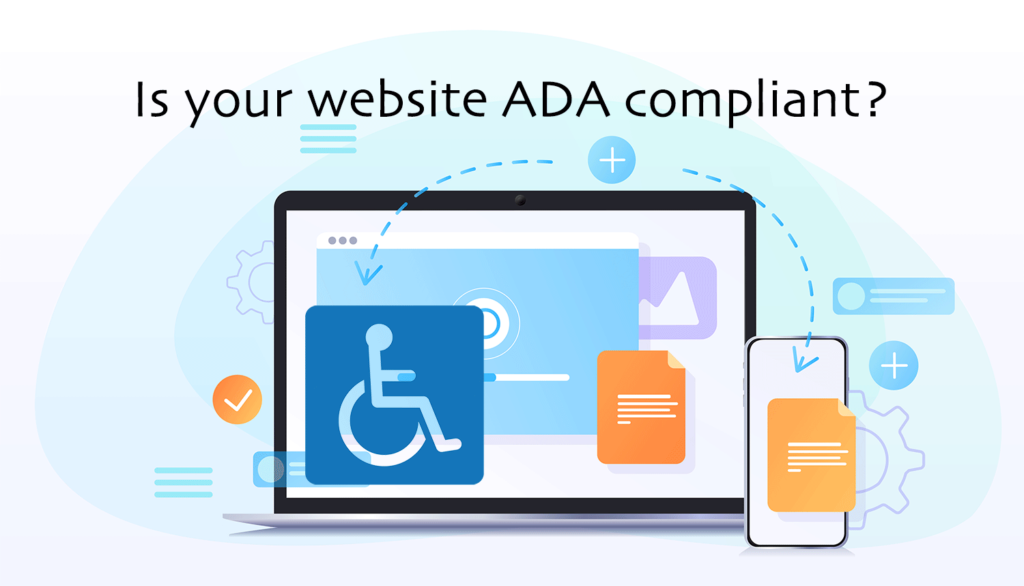The Digital Accessibility Mandate for Modern Businesses

In the era of online-first interactions, ensuring your website is accessible to everyone is not just an option—it is a legal and ethical responsibility. Accessibility is no longer a side consideration but a core expectation for organizations that want to stay competitive, inclusive, and compliant. For businesses aiming to meet legal standards and foster user trust, an ADA Website Audit is the most effective way to uncover, understand, and resolve accessibility issues. From small businesses to global enterprises, every organization with an online presence is responsible for making its digital spaces usable by individuals with disabilities. With legal cases involving inaccessible websites on the rise, proactive auditing has become a critical step in protecting your brand and expanding your reach.
What Is an ADA Website Audit?
An ADA Website Audit is a structured evaluation of a website’s design, code, and content against accessibility standards, primarily those outlined by the Web Content Accessibility Guidelines (WCAG). These guidelines are the globally accepted framework for digital accessibility and are frequently referenced in legal proceedings related to the Americans with Disabilities Act (ADA). The audit process includes both automated testing tools and manual reviews conducted by accessibility experts. These professionals use screen readers, keyboard navigation tests, and usability checks to ensure the site meets expectations for users with visual, auditory, cognitive, and physical impairments. An effective audit provides a clear roadmap of where your site stands and what steps are necessary to bring it into compliance.
Why Businesses Cannot Afford to Ignore Accessibility
Failing to conduct an ADA Website Audit can expose businesses to significant legal, financial, and reputational risks. Thousands of lawsuits have been filed in recent years against companies whose websites were found to be inaccessible. In most of these cases, plaintiffs successfully argue that digital platforms must adhere to the same accessibility standards as physical spaces. The consequences can include court-mandated website overhauls, hefty settlements, and damaging publicity. But the cost of inaction goes beyond legal exposure. When a website is not accessible, it alienates a substantial portion of potential users, including people with disabilities who rely on assistive technologies. In contrast, making your website accessible expands your audience and strengthens your brand image as inclusive and forward-thinking.
The Audit Process: What to Expect
An ADA Website Audit typically begins with an initial scan using automated tools that flag obvious accessibility issues, such as missing image alt tags, low color contrast, and improperly labeled form fields. However, automation is only the starting point. A comprehensive audit goes deeper by including manual testing to catch issues that machines can’t detect—like logical reading order, navigational flow, and interactive element behavior. Accessibility professionals conduct user simulations to understand how real people experience the site. After the analysis, you receive a detailed report outlining violations, recommended fixes, and prioritization based on impact. These insights empower developers, designers, and content creators to implement targeted improvements that lead to full compliance.
Who Should Perform the Audit?
Although some teams attempt to conduct audits in-house using basic tools, the complexity of accessibility requirements often demands the expertise of professionals. Hiring a team that specializes in ADA compliance ensures accuracy, completeness, and strategic remediation. These experts not only understand technical standards but also how they relate to real-world use. A high-quality ADA Website Audit is more than a list of errors—it’s a strategic review that aligns accessibility goals with business objectives. For organizations that want to demonstrate their commitment to inclusivity, third-party audits provide credibility and thoroughness that internal reviews rarely match.
Long-Term Benefits of Accessibility and Compliance
The value of an ADA Website Audit extends far beyond legal protection. Accessibility features typically improve user experience for everyone. Clean layouts, intuitive navigation, readable fonts, and clear calls to action all enhance usability, which increases engagement and conversion rates. Additionally, many elements that contribute to accessibility also improve search engine optimization, boosting your website’s visibility. Compliance also helps future-proof your digital platform. As technologies evolve, accessible foundations make it easier to adapt without rebuilding from scratch. By investing in accessibility now, you’re not just avoiding penalties—you’re setting your brand up for long-term success.
FAQs
What is an ADA Website Audit?
It is a thorough review of a website’s accessibility based on WCAG standards to ensure compliance with the Americans with Disabilities Act and to identify areas that may be unusable by people with disabilities.
Do I need an ADA Website Audit if I use accessibility plugins?
Yes, plugins only offer surface-level fixes. A full audit includes manual testing and a deeper understanding of usability that plugins alone cannot provide.
How often should I audit my website?
At least once a year or after significant content or design changes. Accessibility is not a one-time task; it must be maintained as your site evolves.
Is ADA compliance mandatory for all websites?
While not all websites are explicitly covered under the ADA, most business-related websites can be subject to accessibility laws, especially those offering public services or e-commerce.
Can an audit improve my website’s overall performance?
Yes, the improvements made from an ADA Website Audit enhance site speed, navigation, mobile responsiveness, and SEO—all of which contribute to better user engagement and satisfaction.
Conclusion
Digital accessibility is no longer a feature—it’s a fundamental requirement of doing business online. Conducting a thorough ADA Website Audit is one of the most effective ways to ensure your website is not only compliant but also welcoming to every user. By identifying barriers and implementing practical solutions, you not only mitigate legal risks but also create a more inclusive and successful digital presence. In a time when accessibility expectations are higher than ever, there’s no better moment to act. If you’re ready to take the next step toward true inclusivity and compliance, Order Today and let experts help you transform your website into a fully accessible experience.